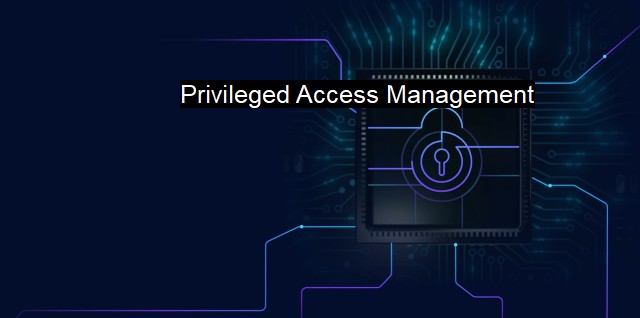What is Privileged Access Management?
Securing Confidential IT Resources: A Comprehensive Look at Privileged Access Management (PAM) and Antivirus Strategies in Enterprises
Privileged Access Management (PAM) is a crucial aspect of cybersecurity that focuses on the control and management of privileged user accounts, most commonly system administrators. Privileged users hold the 'keys to the kingdom,' as they possess access to crucial and sensitive business information. Accordingly, their accounts are prime targets for cyber attackers, as exploiting these privileged accounts can cause catastrophic harm to an organization. Therefore, PAM is critical in mitigating the risk of security breaches and reinforcing a network's integrity.One of the most significant aspects of PAM lies in the necessity to protect, oversee and audit the use of privileged accounts. This need arises from the fact that these accounts have the power either to uphold the smooth operations of an organization through processes such as system configuration, repair, data management, or disrupt these functions completely through accidental misuse or malicious handling.
PAM is typically classified into three main components. The first component is a privileged password vault where all privileged account passwords are securely stored and managed. It drastically reduces the risks of password theft or loss since access to this vault is stringently controlled. Typically, privileged users log into the system once and are authenticated, after which they can access other systems without entering multiple username/password combinations. The vault then has a secure and automated process for changing and managing the passwords on the systems.
The second component is privileged session management. This records and audits the actions of privileged users, providing visibility and control. Session management tools run privileged sessions in isolated environments and oversee their activities. If an administrator carries out suspicious actions, the system will terminate the session and flag the occurrence. Consequently, security professionals can promptly respond to potential cyber threats.
The third component is privileged user behavior analysis. This method involves tracking the typical action patterns of privileged users and identifies anomalous acts. By mapping out a 'normal' pattern for each user, PAM systems can alert security teams when users deviate from their routine, essentially marking when an account may potentially be compromised.
The advantages of implementing PAM are myriad, and PAM strategies can provide security, accountability, governance and compliance benefits. A robust PAM system can strengthen a network's resistance to cyber-attacks, minimize the risk of unintentional disruption from insiders, and help an organization maintain compliance with various government and industry regulatory standards.
Beyond providing security against external cyber threats, PAM policies also offer protection from insider threats. Since privileged users can execute all commands, pose substantial risks, and can potentially cause significant damage, monitoring their activity ensures they are acting responsibly and not misusing their privileges. Also, PAM helps in detecting sophisticated cyber threats that standard antivirus software might miss.
Privileged Access Management plays an integral role in a comprehensive cybersecurity strategy. It goes far beyond basic antivirus protection to prevent malicious or unauthorized network access. The overarching goal of PAM is to minimize the organizational risk by limiting the exposure of powerful admin credentials and continuously monitoring privileged account activity. As the cyber landscape continues to evolve with emergent sophisticated threats, the role and importance of PAM in protecting business-sensitive information will only continue to escalate over time.

Privileged Access Management FAQs
What is privileged access management?
Privileged Access Management (PAM) is a cybersecurity practice that regulates and controls access to sensitive and critical resources such as confidential data, system settings, and critical applications. PAM ensures that only authorized and authenticated individuals or machines are given access to such resources to protect them from any cyber-threats.What are the benefits of using privileged access management?
There are several benefits of implementing PAM in an organization. It helps to reduce the risk of data breaches and cyber-attacks by controlling access to sensitive resources. It also provides better visibility and control over privileged accounts, reduces the attack surface, and ensures compliance with regulatory standards.Can antivirus software replace privileged access management?
No, antivirus software cannot replace privileged access management. Antivirus is designed to detect and remove malware and viruses from the system, whereas PAM is focused on controlling and managing privileged access to critical resources. PAM is an integral part of cybersecurity and should be implemented alongside antivirus software for better security.What are some best practices for implementing privileged access management?
Some of the best practices for implementing PAM include identifying all privileged accounts and resources, implementing the principle of least privilege, enforcing strong authentication and password policies, regular monitoring and auditing of privileged access, and implementing multi-factor authentication. Additionally, organizations should provide regular training and awareness programs to their employees to ensure they understand the importance of PAM and the consequences of non-compliance.| | A | | | B | | | C | | | D | | | E | | | F | | | G | | | H | | | I | | | J | | | K | | | L | | | M | |
| | N | | | O | | | P | | | Q | | | R | | | S | | | T | | | U | | | V | | | W | | | X | | | Y | | | Z | |
| | 1 | | | 2 | | | 3 | | | 4 | | | 7 | | | 8 | | |||||||